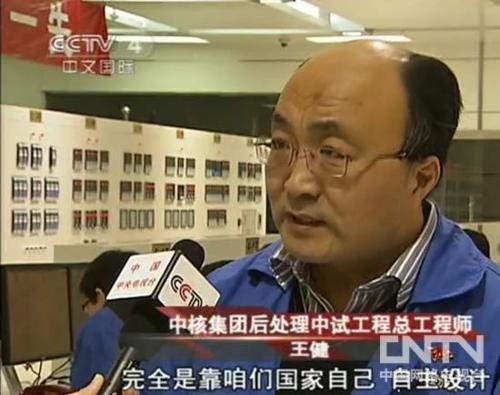
Last week several U.S. media organizations published reports claiming China made a “breakthrough in spent fuel reprocessing technology.” The original BBC story (it has since been replaced with a less sensational version) described the advance as “a new method of reprocessing irradiated fuel;” the current version says that China has “now perfected a procedure that will allow them to reprocess spent nuclear fuel.”
The stories suggest that this was a new process that differs from the process used by other countries that reprocess spent fuel. “Reprocessing” refers to extracting plutonium and uranium from fuel rods that have been used in a nuclear reactor. These recovered materials can be used to make new nuclear fuel. The stories reported that this breakthrough would allow China to produce sufficient amounts of nuclear energy for thousands of years using China’s domestic reserves of uranium, suggesting that this was due to China’s new process.
All of the reports were based on a three-minute Chinese Central Television (CCTV) news broadcast that aired on January 3rd. Stories touting progress are standard fare on Chinese television news in the first week of the new year.
This introductory CCTV report on Chinese reprocessing, which compared spent nuclear fuel to coal ash as a way of explaining the concept of spent fuel to its audience, was nothing out of the ordinary. The statements about thousands of years of nuclear energy were hyperbolic extrapolations based on estimates of China’s proven uranium reserves and the imagined theoretical efficiencies of fast breeder reactors that no country has succeeded in commercializing, despite decades of effort and billions of dollars of government investments.
The broadcast described the progress made during 2010 at plant 404—a nuclear facility in Gansu province that China is building as a pilot-scale commercial reprocessing plant. While the broadcast described recent progress at the plant using the Chinese word for “major breakthrough” (重大突破) it was clear that it was using this term to describe something that was a first for China, not a breakthrough in reprocessing technology. This is emphasized repeatedly in the short broadcast. The Chinese engineers who were interviewed explained that what was important is they did this completely on their own, with their own technology, and that their ability to extract uranium and plutonium from spent nuclear fuel in a commercial pilot plant allows China to join several other nations that already have this capability.
And even this “first” has to be qualified. It was the first time spent fuel had been reprocessed at this commercial reprocessing plant, which experts believe China completed in 2004. (It is not clear why it took six years for reprocessing to start at the facility, but it seems to be typical of the rate at which China’s nuclear energy program has been progressing.) But China began reprocessing as part of its nuclear weapons program in 1968, so it is not a first for Chinese reprocessing.
There was only one sentence in the CCTV broadcast about what China actually did, which is “the production of up-to-standard uranium and plutonium products” from spent fuel. This appears to mean that it produced separated plutionium and uranium that were pure enough to be used to make nuclear fuel.
Besides the technical difficulty and high cost of reprocessing and using plutonium to fuel reactors, commercial reprocessing creates large amounts of separated plutonium—which can be used to make nuclear weapons—and therefore increases the risk of nuclear proliferation and nuclear terrorism. For this reason, the U.S. government officially abandoned reprocessing in the 1970s.
